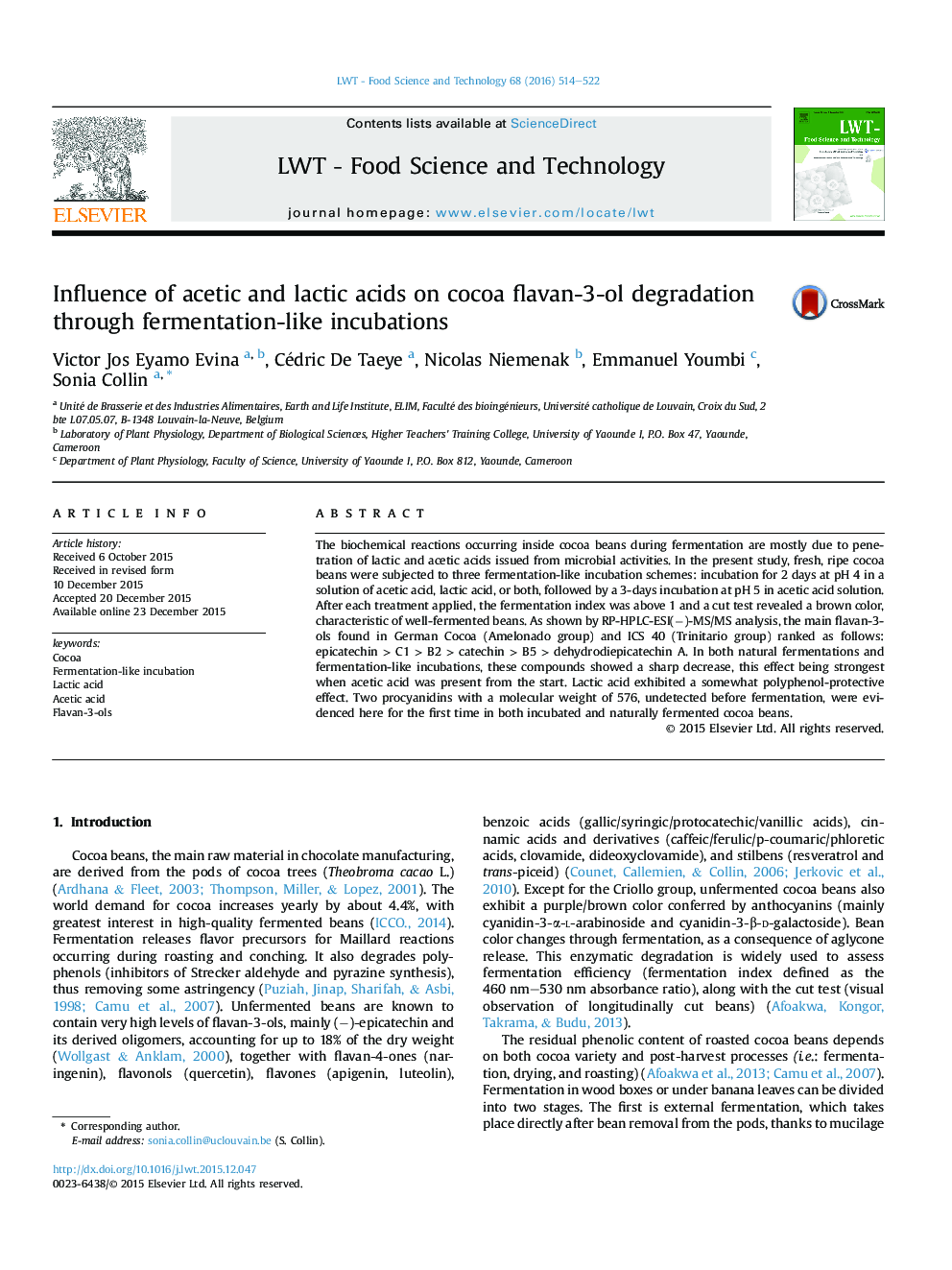| Article ID | Journal | Published Year | Pages | File Type |
|---|---|---|---|---|
| 4563676 | LWT - Food Science and Technology | 2016 | 9 Pages |
•Incubation in lactic and/or acetic acid solutions mimics natural fermentation well.•Lactic acid mitigates flavan-3-ol degradation induced by acetic acid.•Dehydrodiepicatechin A is present in unfermented cocoa.•Two compounds with a MW of 576 appear in both incubated and fermented beans.•They could be potential analytical indicators of a well-conducted fermentation.
The biochemical reactions occurring inside cocoa beans during fermentation are mostly due to penetration of lactic and acetic acids issued from microbial activities. In the present study, fresh, ripe cocoa beans were subjected to three fermentation-like incubation schemes: incubation for 2 days at pH 4 in a solution of acetic acid, lactic acid, or both, followed by a 3-days incubation at pH 5 in acetic acid solution. After each treatment applied, the fermentation index was above 1 and a cut test revealed a brown color, characteristic of well-fermented beans. As shown by RP-HPLC-ESI(−)-MS/MS analysis, the main flavan-3-ols found in German Cocoa (Amelonado group) and ICS 40 (Trinitario group) ranked as follows: epicatechin > C1 > B2 > catechin > B5 > dehydrodiepicatechin A. In both natural fermentations and fermentation-like incubations, these compounds showed a sharp decrease, this effect being strongest when acetic acid was present from the start. Lactic acid exhibited a somewhat polyphenol-protective effect. Two procyanidins with a molecular weight of 576, undetected before fermentation, were evidenced here for the first time in both incubated and naturally fermented cocoa beans.
